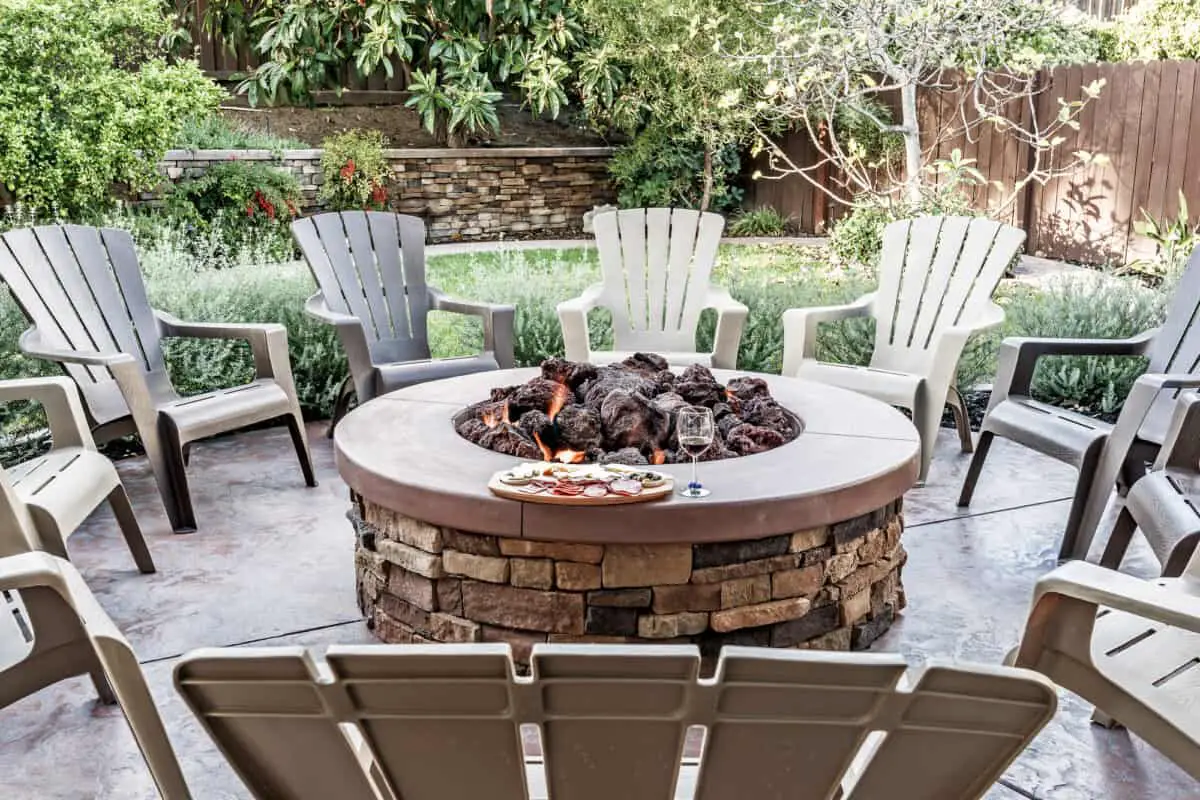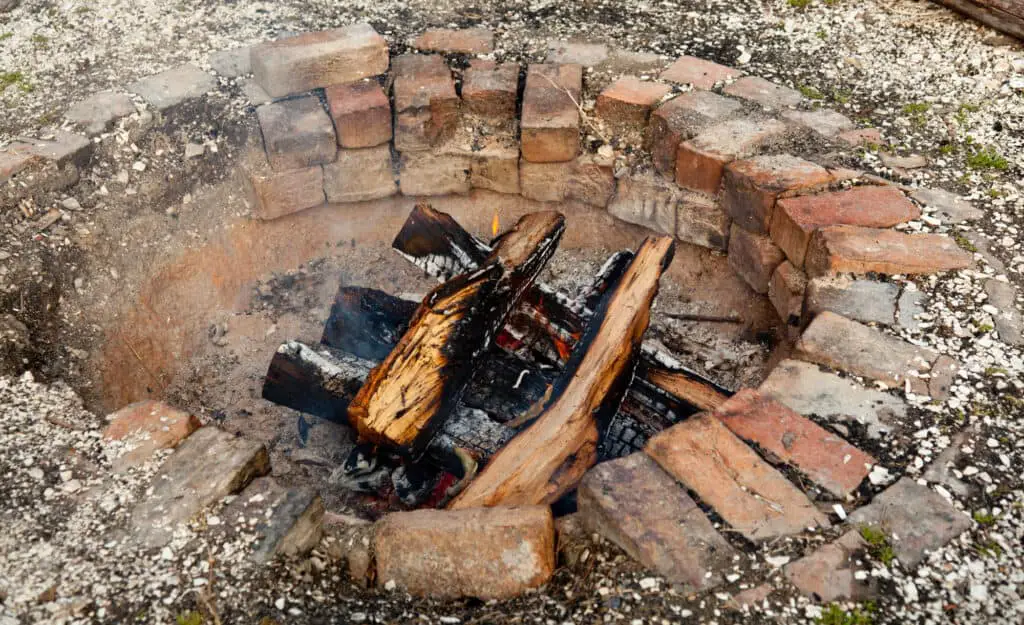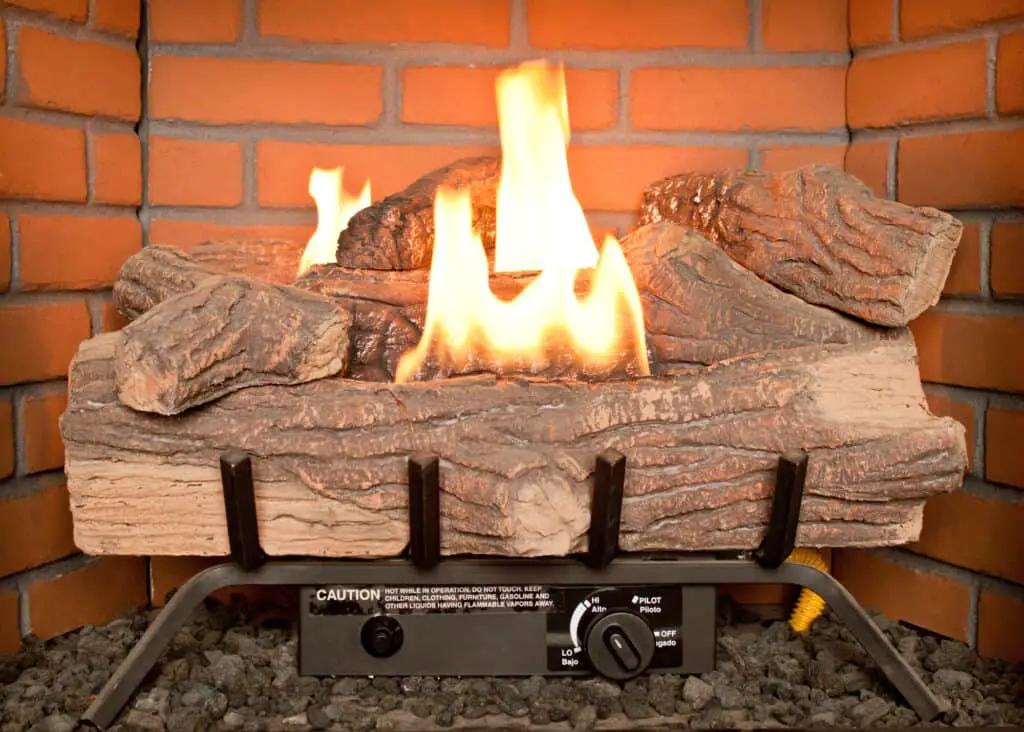It is not recommended to burn wood in a gas fire pit as it can produce excessive heat and damage your fire pit or even cause a fire accident in your home.
There are safer alternatives to using gas logs that can provide a natural fire look without the associated risks.
During the cooler seasons, fire pits are an excellent way to warm up outdoor areas.
There are two primary kinds of fire pits – ones that use firewood and ones that use gas.
New owners of gas fire pits often wonder what materials can be safely burned in their fire pits.
While it may appear harmless due to the fire pit’s familiarity with flames, a wood-burning fire generates significantly more heat than a standard gas flame.
If left exposed to high temperatures, the fire pit may crack and become damaged.
This article delves deeper into the topic and provides information on using wood-burning fire pits to ignite a fire.
Related Reading: How to Light an Outdoor Fire Pit

Table of Contents
Why You Shouldn’t Burn Wood in a Gas Fire Pit
Firewood has a distinct advantage over gas in that it produces a significantly higher amount of heat.
Did you know that a cord of firewood, equivalent to 128 cubic feet, contains an impressive 25 million BTUs?
This is significantly more than the average gas, like propane, which only has around 24,000 BTUs per liter.
If you intend to burn wood in a gas fire pit, it may not be a good option as it is designed to heat space efficiently.
If the fire pit is exposed to that high heat, there is a chance that it could be compromised.
A crack in the fire pit not only affects its appearance but also poses a safety risk.
How to Use a Gas Fire Pit
Gas fire pits are designed to run on gas, as their name implies.
For permanent fire pits, the gas used is typically natural gas, which is connected directly to your home through gas lines.
When it comes to portable fire pits, propane is often the preferred fuel choice. It’s also a great option for backyard or patio fire pit tables.
Providing guidance on using a fire pit is relatively easy, which is why fire pits have become so trendy.
The key is to remember to ignite the fire before turning on the gas.
To safely light a gas pit, first place the flame of a long candle lighter over the pit and then turn on the gas.
If you turn on the gas before lighting the flame, it can cause pockets of gas to explode, potentially resulting in a scary situation or even injuries.
That concludes the discussion on gas fire pits.
However, if you have a strong desire to burn wood in a fire pit, please continue reading for more information.
Wood-Burning Fire Pits
There are fire pits designed specifically to burn firewood.
These fire pits are designed for burning wood. If you have a desire to burn wood on a fire pit, it would be wise to invest in one of these.
However, there is a notable distinction.
Even if we advise against it, should you choose to burn wood on a gas fire pit, you would typically add the firewood onto an already ignited fire pit.
If you’re using a wood-burning fire pit, you’ll need to follow the usual steps for starting a fire. Let’s take a quick look at those steps.
How to Use a Wood-Burning Fire Pit
Regrettably, using a wood-burning fire pit is not as straightforward as merely putting wood and igniting it. To use one, you will have to follow four different steps:
Gather the Tinder, Kindling, and Firewood
- Tinder: Here are some examples of quick-burning materials that can be used to ignite kindling when starting a fire. These materials include paper, dry wood chips, sawdust, dry leaves, and dry pine cones.
- Kindling: To start a fire, gather sticks and twigs to use as kindling. Arrange them around the tinder and light it up. The kindling will catch fire and burn for a while, eventually igniting the firewood.
- Firewood: This wood is essential for maintaining the fire and providing warmth. However, for optimal performance, it’s recommended to use seasoned firewood – wood that has been dried to less than 25% moisture content.
Keep in mind the surface you’re using, like a wood deck. Different surfaces require different additional fire safety precautions.
Positioning the Tinder and the Kindling
After gathering all three necessary materials, it’s time to place a small lump of tinder, roughly the size of a baseball, at the center of the pit.
Now place the kindling around it in a teepee-like shape.
Make sure to leave enough space between the sticks to allow sufficient airflow.
Also, leave an extra space at one point in the teepee from where you can light the tinder.

Different firepits will have different bases, and there are pros and cons to each type. Additionally, firepit rings can help further contain a firepit fire.
Get the Fire Going
Now comes the fun part. Use a long candle lighter to light up the tinder from the space between the kindling teepee. Wait until the kindling catches fire.
After starting the kindling, arrange the main firewood around it. There are various positions in which you can place the firewood.
You have the option to create a new layer of teepee around the kindling or stack them horizontally in a log cabin formation.
Either case, pretty soon, your fire should get going. This is how you properly burn wood on a fire pit.
When your firewood is almost burned out, simply add a new log to keep the fire going.
Repeat this process for as long as you desire to keep the fire burning. A small bundle of firewood should be sufficient to last you an entire night.
Putting Out the Fire
Many people tend to overlook this step, but it is essential to ensure safety.
After using a fire pit, it is crucial to extinguish the embers using sand or water.
You should always use sand if you have some handy. But since most people don’t, water will do the trick too.
Just make sure you mix and saturate the amber well with the water, or it might ignite again later, causing the risk of a fire.
Outdoor Gas Logs
If you’re simply trying to achieve a more natural look by putting wood in a gas fire pit, there may be something that could catch your attention.
Gas logs are artificial logs usually made up of ceramic.
Although these gas logs do not enhance the general heating of the area, they do contribute to the visual appeal by providing a more organic appearance to your gas fire pit.
Carbon accumulation is normal in your gas fire pit after use. Fortunately, you can easily remove it.
Most of these gas logs are designed to withstand the high temperatures of a gas fire pit and offer long-term durability.
For long-term durability, consider investing in a gas fire pit. If you already have one but want a more natural appearance, a gas log can help prevent burning.

Conclusion
Fire pits serve the dual purpose of providing warmth and enhancing the overall appeal of the surroundings. Gas fire pits are particularly convenient to operate.
But if you’ve ever thought about burning wood in a gas fire pit, DON’T DO IT!
Burning wood produces a more intense fire than using a gas fire pit.
Do you prefer the warmth of a fire?
Many people still opt for burning firewood as a heating source. However, the high temperature can harm your gas fire pit or nearby surfaces.
Looking for a fire pit to use in your outdoor space or patio?
If you prefer the traditional feel of burning wood, there are options available for wood-burning fire pits.
I enjoy using my wood-burning fire pit as it helps me improve my fire-starting skills when camping.
However, I also have a gas fire pit that is handy when I need to start a fire quickly.
Why not have both?
Enjoy living the outdoor life!!!
